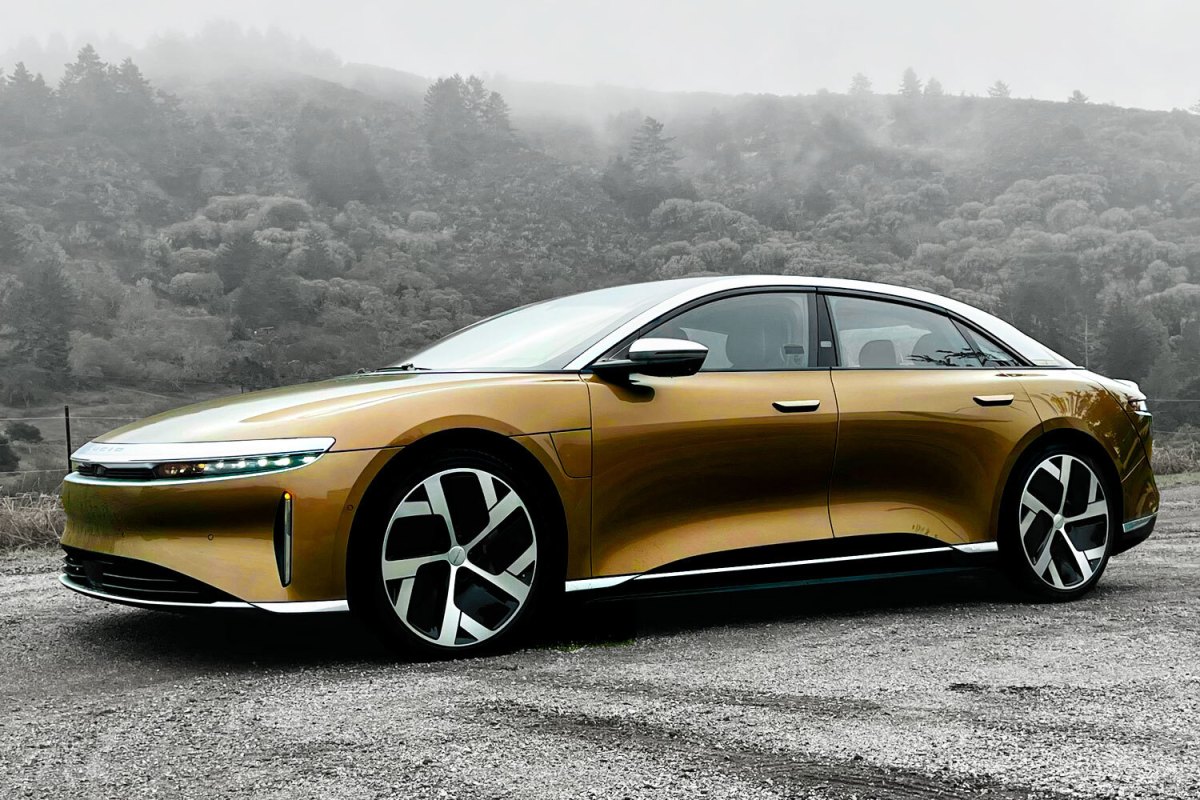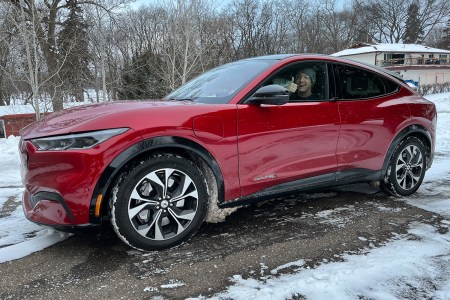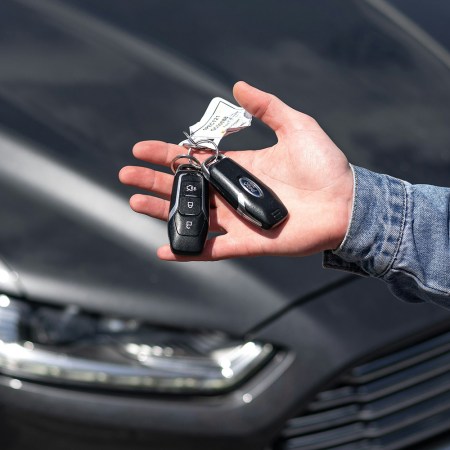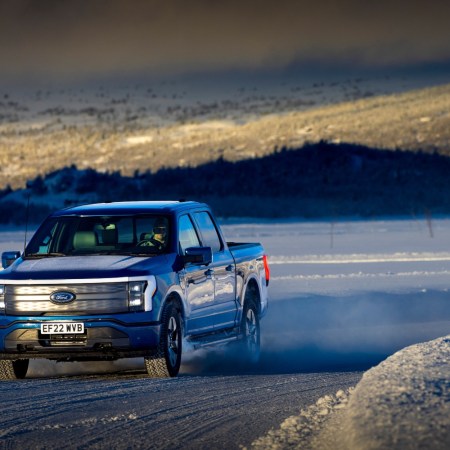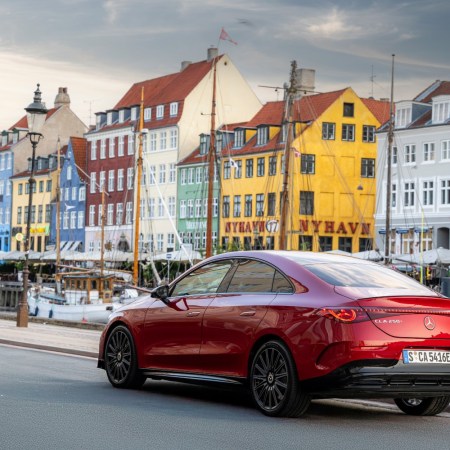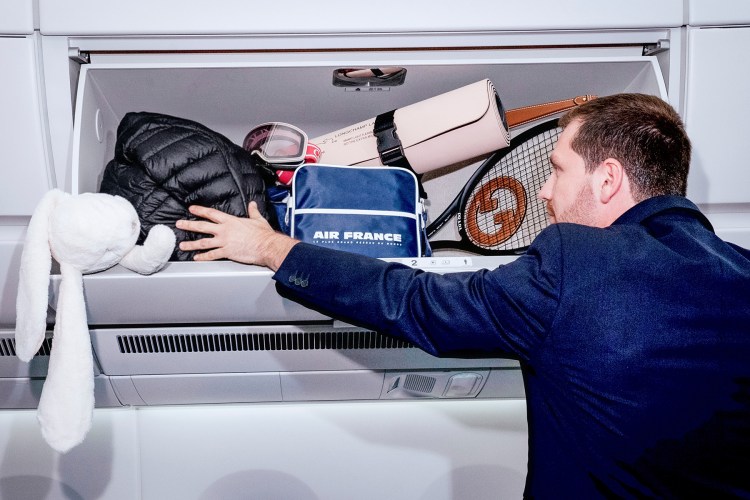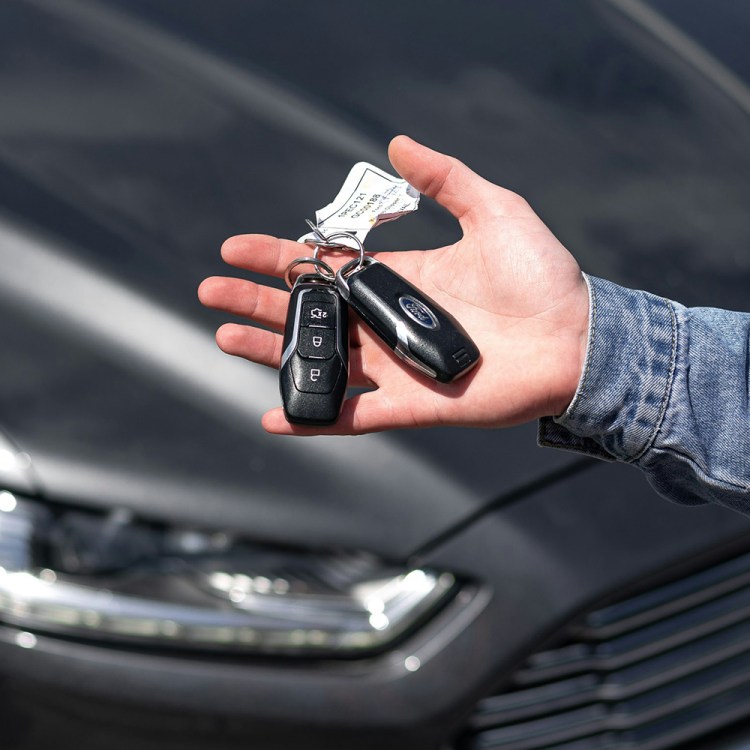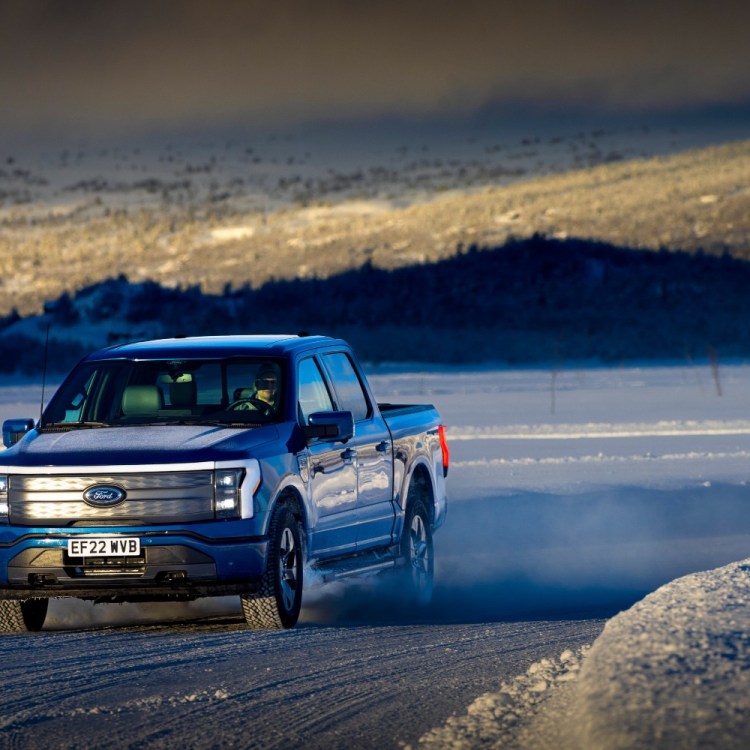Around this time last year, I jetted to Newark, CA to witness the first dozen Lucid Air customer handovers at company HQ. The usual Silicon Valley fanfare was on display, with CEO Peter Rawlinson delivering a rah-rah speech and new owners gushing over their shiny new EVs. While the startup hype unfolded according to script, one thing caught me off guard: How the Lucid Air Dream Edition drove like a complete, well-thought-out car.
Car critics earn their stripes by criticizing; calling out faults, it’s what we do. And sure, my drive in the Air revealed a few pre-production niggles, the annoyances the PR department say they’ll soon sort out. In this case, I experienced some inconsistent brake pedal feedback, an unexpectedly stiff ride over rough roads, and a few multimedia system glitches. But the $169,000, 1,111-horsepower top model still managed to make a killer first impression, especially considering it came as a bolt out of the blue in a segment where mainstream manufacturers have been pedaling hard to catch up with Tesla’s gamechanging, but aging, Model S.
Seasons Change
What a difference a year makes. After my first drive, the Air went on to earn critical acclaim, swiping Motor Trend’s 2022 Car of the Year award and the praise of similarly-minded pundits. Despite the future looking rosy for the California-based carmaker, its trajectory has been rocky, at best. Stocks are currently worth a quarter of their debut IPO value, with critics suggesting all EV companies have been grossly overvalued; runaway inflation and supply chain issues have made it damn near impossible to keep market valuations afloat; and software gremlins have plagued production cars. Whatever new age seemed to be dawning back in November of 2021 is now in a serious lull.
In the midst of Lucid’s long, dark winter, I caught up designer/brand boss Derek Jenkins and comms dudes Jeff Curry and Dave Buchko to get the lowdown on what’s coming down the pike from the carmaker. For starters, they were quick to mention the dogpile of improvements made to what essentially started as a beta model: 95% of the multimedia system’s computer code has been rewritten for better performance; lane centering has been added to the highway assist functionality; and a bunch of other updates beamed directly to vehicles from the mothership.
I Idled in an Electric Car for 12 Hours in the Freezing Cold to See What Would Happen
The I-95 shutdown ignited a debate about EVs in winter, so I did an extraordinarily mundane testFuture-Proofing
The Lucid team also talked future product in very divergent offerings. First up was the just-teased Gravity SUV, a must-have segment which is expected to drop in 2024. Given the existing powertrains but modified platform, this model seems a no-brainer given the current demands of the market. Because sweet excess simply ain’t enough, there’s also the upcoming 1,200+ horsepower, quarter-million-dollar Sapphire model, which wears carbon fiber wheel covers and a befuddling 0 to 60 mph time of 1.86 seconds. On the other end of the spectrum is the long-awaited Pure model, which drops the sedan’s starting MSRP down to a far more terrestrial $87,400. The Pure will inarguably be the most important car in the lineup, as it should prove that an EV shouldn’t have to cost as much as a house to stoke desire. With a range of 410 miles and a respectable 480 horsepower, the upcoming base model could be forgiven for swapping the brand’s signature snazzy glass roof with an aluminum top.
The future models are key to cementing Lucid’s future. But will they come soon enough? And when they do, will they operate as seamlessly as they should? Without a crystal ball at my disposal, I took the pulse of the current state of electrified affairs by revisiting one of the brand’s top models, the Grand Touring Performance.
Here and Now
Priced at $179,000, Lucid’s Grand Touring Performance (or GTP for short) is hardly a harbinger of things to come; it claims all the hallmarks of the bells and whistles that make for a splashy debut, not a sustainable sales future. But with a staggering 1,050 horsepower and 446 miles of range, the bow-roofed sedan is also an audacious expression of what can be. Whatever the Air lacks in exterior charisma (its shape may be comely to some, but is primarily designed to cheat the wind for maximum efficiency), it makes up for in interior charm. The dashboard’s Eero Saarinen shape is equally dictated by outstanding forward visibility and the gentle arcs of elegantly curved touchscreens. Alcantara figures prominently, as do tidy wool-like fabric accents and soft leather. Though there’s a bit of an over-reliance on electronic menus for some functions, CEO Peter Rawlinson, an avowed watch geek, thankfully made a point of inserting a few key mechanical controls: A roller dial for audio volume, and buttons for key air conditioning controls.
On the road, the Air proves a delight to live with over the course of a week. Approach the vehicle, and it unlocks in the presence of the key fob; close the door, and it seals itself shut, preparing for departure without requiring a key to be inserted or even the car to be switched on. These are incrementally novel party tricks, but the real showstopper comes when you switch to Sprint mode and drop the hammer. Assuming you’ve got sufficient tarmac ahead of you, the Air feels like it’s capable of getting air as it hurdles forward. Official 0 to 60 mph time is 2.6 seconds, and in the real world the barrage of G forces feels absolutely boggling and nearly uncomfortable as the Air proceeds to break an unfathomable amount of traffic laws. The thing about four-figure horsepower bragging rights is that they usually come with either a seven-figure price tag or a priceless amount of legal disclaimers. But in this application the Air also happens to be remarkably smooth and quiet over most roads, driving large but feeling soothing, with an outstanding 21-speaker, Dolby Atmos-equipped surround system to further block out the world.
…and Here we Are
My time with the Lucid Air was almost as refreshingly gratifying as my first outing a year ago. I put nearly 700 miles on the pricey sedan in a week, encouraged by its ease of use, quick charging time (300 miles of range in 30 minutes), and deliciously dialed driving dynamics, despite its big footprint. But the experience wasn’t without its glitches, including a sometimes-reluctance to recognize the key fob, some still-wonky multimedia interface moments, and a still-not-ready-for-primetime adaptive cruise control system. There was also a glaring lack of Apple CarPlay, though Lucid says the feature is coming soon.
As with any new company, let alone one tasked with building something as inherently complex and prone to failure as an automobile, Lucid has completed its first year of production with a daunting to do list in order to tackle the next hurdle. With an überquick performance sedan, an SUV, and a considerably more affordable sedan waiting in the wings, it’s safe to say there’s only one direction for the scrappy startup to go: up.
This article appeared in an InsideHook newsletter. Sign up for free to get more on travel, wellness, style, drinking, and culture.
